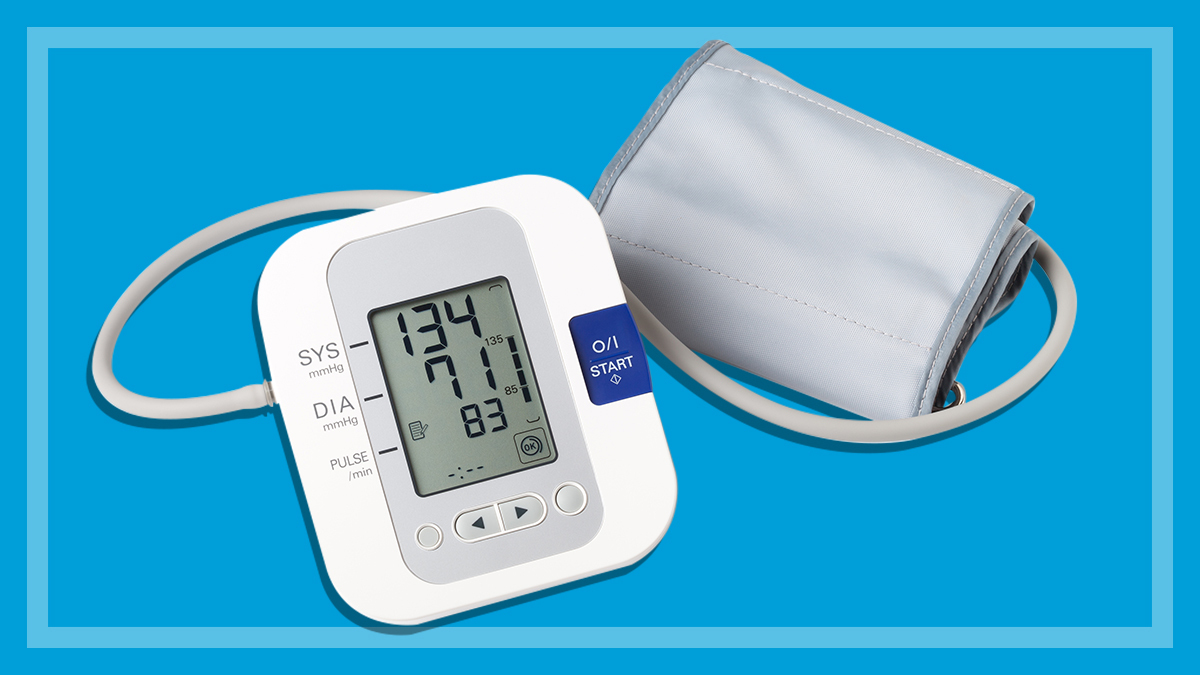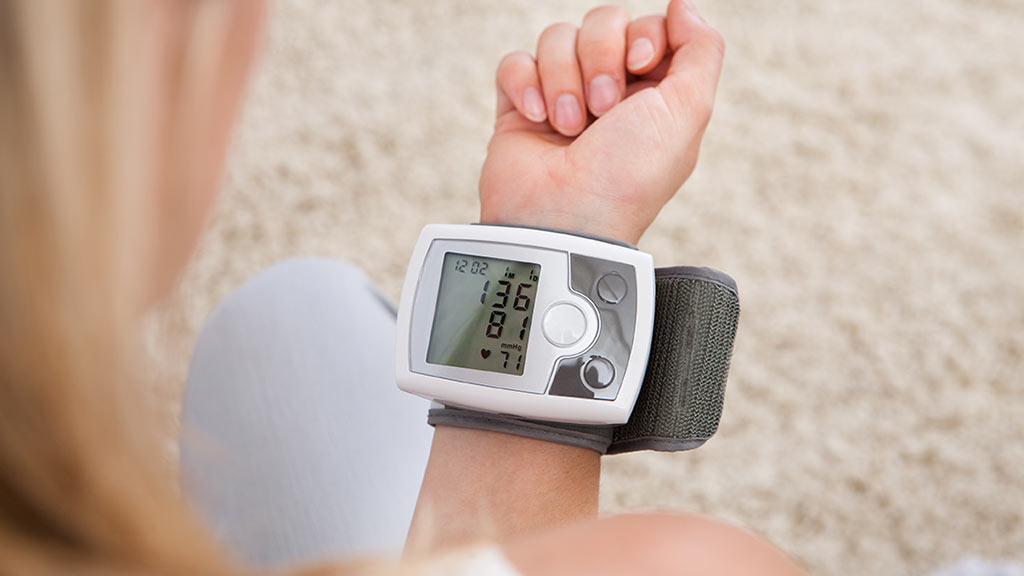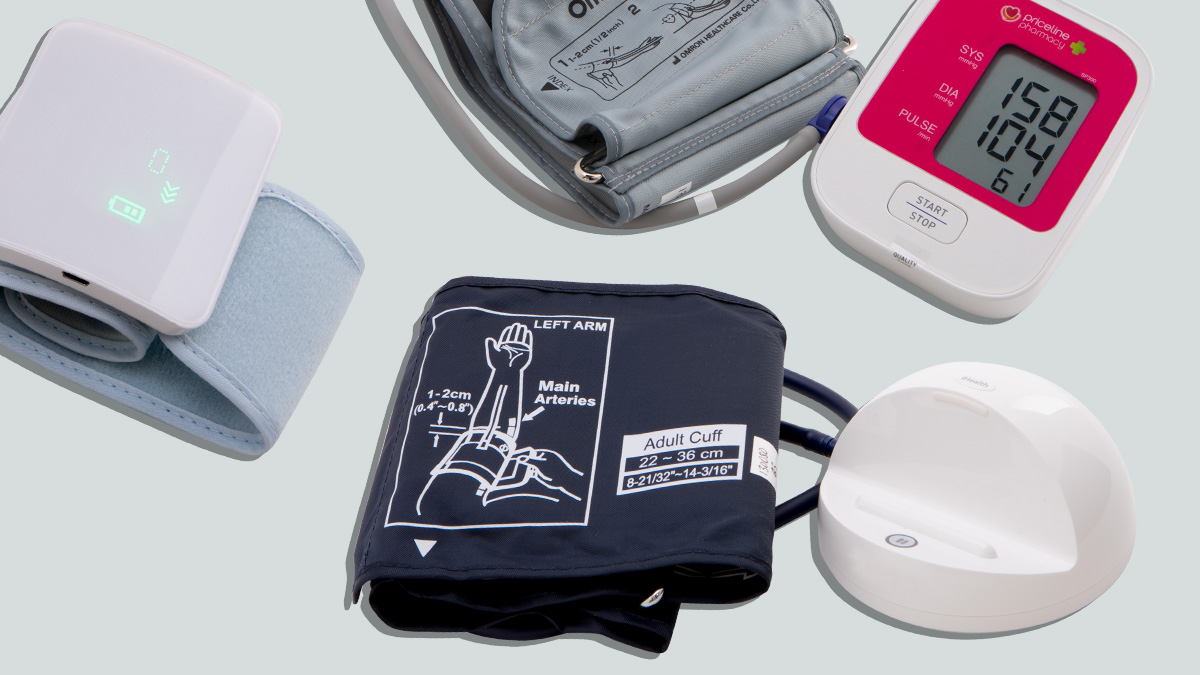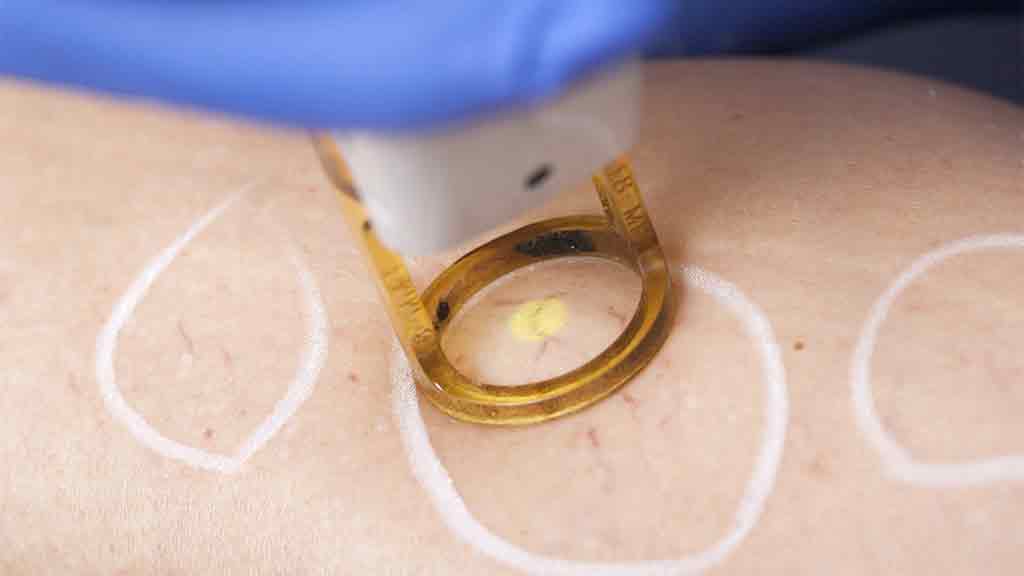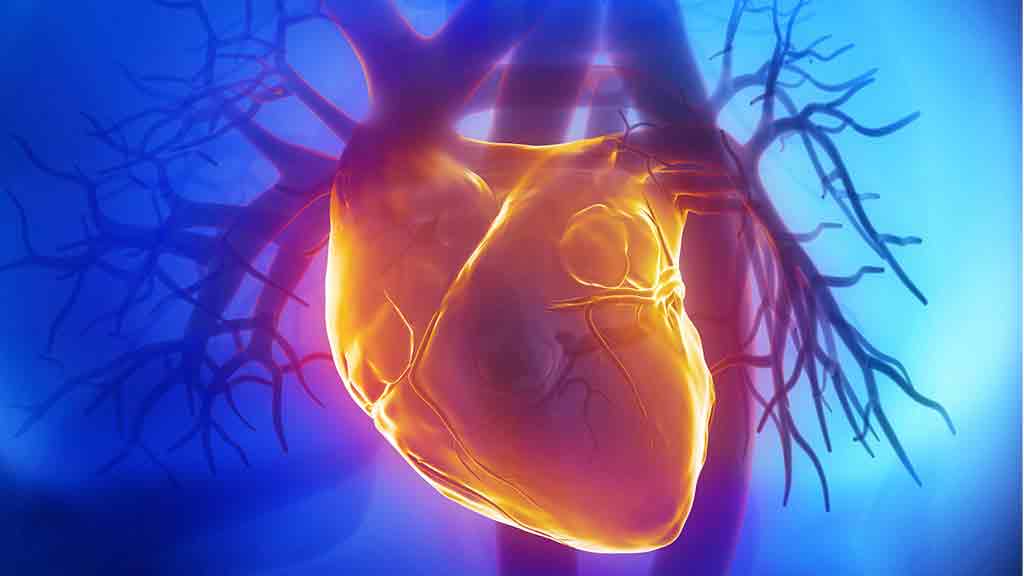Get our independent lab tests, expert reviews and honest advice.
How to measure your blood pressure
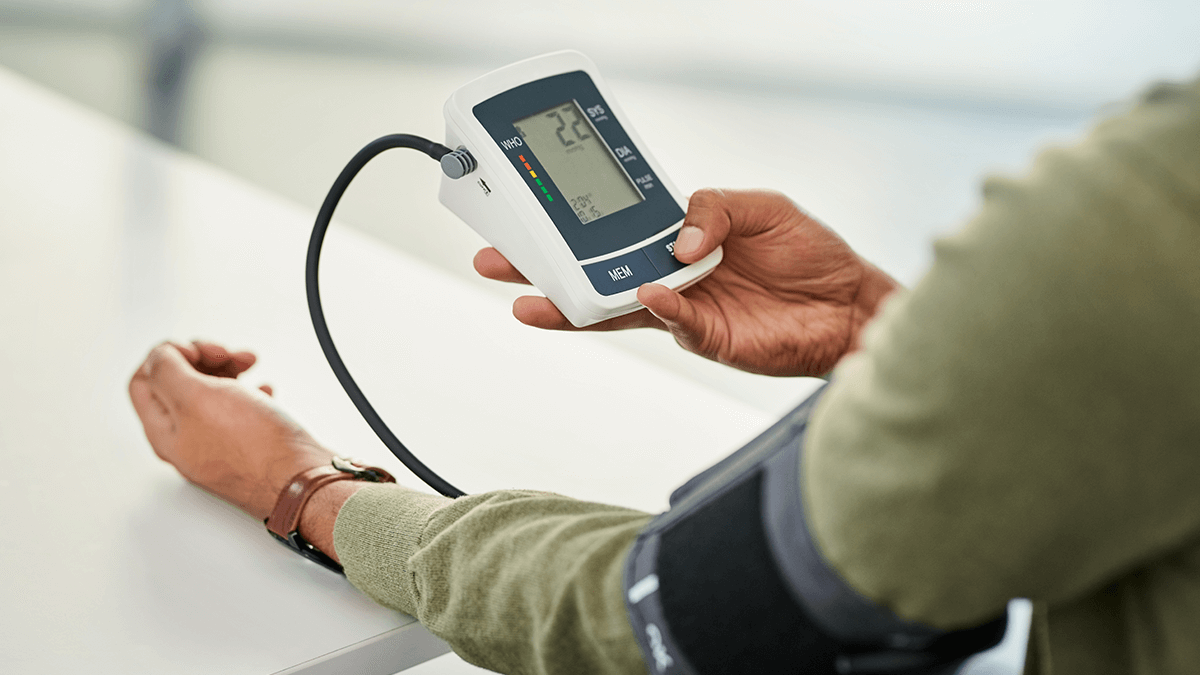
Tracking your blood pressure is an important part of managing several medical conditions, so knowing how to get an accurate result each time is essential. A wrong reading could send you to the doctor in an unnecessary panic – or worse, leave you thinking everything’s OK when it’s not.
On this page:
- What is blood pressure? Systolic vs diastolic figures
- How to measure your blood pressure in eight steps
- Is it normal for blood pressure to vary?
- When is the optimal time to measure blood pressure?
- How long does it take to get a blood pressure reading?
- Ensuring the accuracy of your blood pressure monitor over time
- What's a normal blood pressure, and what's high?
- Managing high blood pressure
Follow our eight simple steps for blood pressure peace of mind and results you can trust.
What is blood pressure? Systolic vs diastolic figures
Blood pressure is created by the heart pumping blood through the arteries. It’s measured in millimetres of mercury (mmHg), and given as two numbers – 120/80 mmHg, for example, or ‘120 over 80’.
The first number is what’s called systolic pressure, caused by your contracting (beating) heart. The second number is what’s called diastolic pressure, and is the pressure between beats when your heart relaxes.
High blood pressure, or hypertension, can increase your risk of heart attack, stroke, heart failure and kidney disease. When weighing up your risk, your GP will consider factors such as your age, sex, family history and weight, and whether or not you smoke.
How to measure your blood pressure in eight steps
- Don’t exercise, have a bath, smoke, or drink coffee, tea, cola or other stimulating drinks for a couple of hours before you plan to take a measurement.
- Sit comfortably at a table.
- Remove watches, jewellery or anything that may interfere with the measurement, and have a bare arm or wrist (depending on the type of monitor you’re using).
- Make sure you’re comfortable – relax for a few minutes before you start.
- Ensure you take measurements using the same arm each time, as your blood pressure is different in each arm.
- If you’re using an arm monitor, put on the cuff so that its centre is at heart height and your arm is resting on the table. If you’re using a wrist monitor, put on the cuff and raise the wrist to heart height
- Follow the monitor’s instructions and take two measurements within a couple of minutes of each other. If they differ by more than 10mmHg (e.g. one reading of 120/80 and another of 135/80, a difference of 15mmHg), take a third measurement.
- Keep a record of all results, and make a note of events that might explain an unusual result (for example, if you had an argument earlier that day, or if the grandkids were running around you while you took the measurement).
Is it normal for blood pressure to vary?
Your blood pressure can vary by as much as 30–50mmHg over the course of a day and it’s influenced by a range of factors, including food and drink, caffeine and alcohol consumption, physical exertion, stress (including the stress of going to the doctor to get your blood pressure measured – known as white-coat hypertension), and even busting for a wee will have an effect on your blood pressure.
Your blood pressure is usually higher in the afternoon than in the morning. That’s why it’s important to measure it at the same time, and under the same conditions each day. It’s also why it’s more important to look at changes over time rather than focusing on a single reading.
When is the optimal time to measure blood pressure?
To get comparable, consistent measurements, you need to measure your blood pressure at the same time of day and under the same conditions every time, ideally twice daily – in the morning before breakfast and again in the evening. You should also take two or three measurements each time. This gives you the best possible chance of taking accurate, consistent readings and of spotting any changes over time.
If in doubt, your GP can advise you on the best time to measure your blood pressure and how often you should measure it, and they can also check that you’re using your own blood pressure monitor correctly.
How long does it take to get a blood pressure reading?
Taking a blood pressure reading only takes a few seconds, but while the reading itself is quick, you need to take some time to prepare beforehand. You should abstain from food, caffeine, tobacco and alcohol for at least half an hour before taking a measurement, and visit the bathroom – a full bladder can raise your blood pressure a little, reducing accuracy.
You should also sit still in a comfortable chair with arms and legs uncrossed for five minutes before taking a reading, and don’t talk while taking your blood pressure.
Ensuring the accuracy of your blood pressure monitor over time
To ensure accuracy, manufacturers strongly recommend visiting your GP for your first measurement, where you should measure your blood pressure using both the GP’s monitor and your own (we recommend testing at least three times and working out an average).
According to Dr Brian Morton from the Australian Medical Association, a fluctuation of about +/- 10mmHg is acceptable between different monitors, and we haven’t found an average fluctuation beyond this for any monitors we’ve reviewed.
You should go back and check your monitor’s readings against your GP’s machine every six months or so. Some monitor instructions also recommend sending the monitor back to the manufacturer every year for calibration.
What blood pressure cuff size do you need?
Most blood pressure monitors come with a medium-sized cuff already fitted. While this will be suitable for the majority of users, there are different sized cuffs available for several of the monitors in our test if your arm is exceptionally large or small.
To get the right cuff size for an arm model, measure your arm’s circumference halfway between your shoulder and elbow, while standing with your arm hanging at your side. A circumference of 18–22cm requires a small cuff, 22–32cm requires a medium cuff, and above 32cm you’ll need a large cuff – but check the measurements against the manufacturer’s instructions on the product you intend to buy.
What’s a normal blood pressure, and what’s high?

High blood pressure is usually asymptomatic, so you may not even be aware you have it. That’s why the disease is often called “the silent killer”.
Here’s how The Heart Foundation defines normal and high blood pressure:
- Less than 120/80: normal
- Between 120/80 and 140/90: normal to high
- Equal or greater than 140/90: high
- Equal or greater than 180/110: very high
What causes high blood pressure?
High pressure or hypertension can potentially put a strain on your arteries and organs, increasing the risk of heart attack or stroke.
Your lifestyle is a big contributor to the risk of hypertension – being overweight, drinking and smoking can all raise your blood pressure.
What you eat also has a big impact – a diet high in sugar can lead to weight gain, which in turn can elevate your blood pressure. Similarly, a diet high in saturated fat can raise blood cholesterol, which also affects your cardiovascular system.
Your blood pressure also gets higher as you get older.
Managing high blood pressure
To prevent high blood pressure, or to manage it once you’ve been diagnosed, follow these tips.
- Visit your GP regularly for a check-up, especially when you know you have high blood pressure.
- Quit smoking.
- Limit the amount of alcohol you drink.
- Exercise regularly (but note that there are certain sports to avoid when you have high blood pressure, such as lifting heavy weights) and consider stress-reducing techniques like yoga and meditation.
- Eat less red meat, and avoid salty and fatty foods.
- Eat more cereals, fish, fruit and vegetables.
- Maintain a healthy body weight.
Medication for high blood pressure
If lifestyle changes don’t lower your blood pressure enough, your doctor may prescribe medication. Make sure you take it, and don’t adjust the dosage yourself based on your own blood pressure measurements. This is known as “self diagnosis”, and fiddling with your medication yourself can have serious consequences.
Low blood pressure
Low blood pressure, or hypotension, isn’t as serious as high blood pressure but it’s still worth addressing as it can cause dizziness and fainting, which may in turn result in further injuries from falling and hitting your head.
What causes low blood pressure?
Low blood pressure can be the result of genetics, or may be caused by an illness or other health issue such as diabetes, neurological conditions, heart problems, or serious injury and shock.
Can blood pressure monitors detect a heart attack?
Not necessarily. During a heart attack your blood pressure may rise as your fight or flight mechanism feeds adrenaline into your system, or it might fall as your damaged heart weakens, or it might stay exactly the same. Conversely, there’s a whole slew of (non-heart attack related) factors that can affect your blood pressure in the short term. As a result, a change in blood pressure alone without other symptoms is not a reliable sign of a heart attack.

